Description
MrKen Cosmo Mk2 HVLS DC Ceiling Fan for Warehouses, Commercial & Industrial Premises
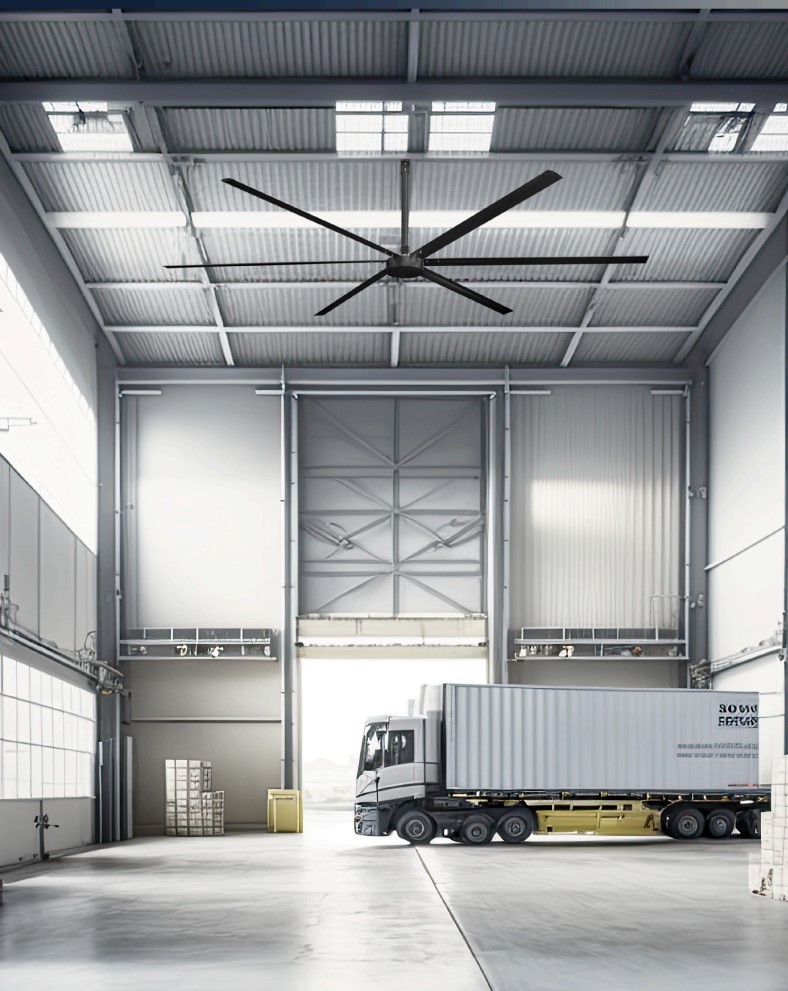
MrKen’s Bangkok Warehouse – The Cosmo 4.3m is very effective even at this 10m height.
The MrKen Cosmo HVLS is designed to deliver massive volumes of air at 2-3m/s for large buildings such as warehouses, garages, shops and malls, airports, logistics and distribution centres, showrooms, open-air and indoor restaurants, schools, gyms, places of worship, factories, farms, cattle sheds etc. at an incredibly low energy use of only 100-300 watts, the same as your pc! Putting regular ceiling fans in these large spaces is simply a waste of time and money but you see it all the time!
Whilst HLVS High Volume Low Speed ceiling fans have been around for 10 years the low-energy brushless DC (BLDC) versions of them are relatively recent innovations. These bring all the benefits of moving a huge amount of air but with the very low energy use that DC control technology offers (70% energy saving). No 3-phase power or complicated step-transformers are needed. In addition, they are easy-to-install without heavy lifting gear or expensive controllers thus giving even quicker paybacks that can be measured in months.
The original Cosmo was launched in Thailand in July 2020 and had an amazing airflow of 92,000 m3/h – that is equivalent to 10 regular ceiling fans! It has already proved a big hit there due to its high-performance, light-weight, low-energy consumption, ease-of-installation and most important of all it is great value. It’s low purchase price is less than half of the competition which coupled with it’s lower installation and running costs make it an unbeatable choice.
New Cosmo Mark 2 More Powerful – Launched Sept 2023
A newer version of this fan was launched in September 2023 using the very latest improvements in Taiwanese motor technology and aerodynamic blade design. It has a much better quality 10-speed motor (Permanent Magnet Synchronous Motor PMSM) for improved efficiency and reliability plus larger blade options going up to 4.3m (168 inches).
When run at it’s most efficient speed (approx. half the max) the airflow is delivered at an incredible 66 m3/min/watt. The largest size is 4.3m (168 inch) diameter which delivers an incredible 450,000 m3/h, equivalent to 45 standard ceiling fans, covering up to 400m2 area from just one 4.3m fan.
Cosmo HVLS Ceiling Fan Sizes & Key Specifications
The new Cosmo comes in 4 sizes and are available to order, subject to stock, on an 8 week delivery. The come with the control box (which is fed by regular 240v mains power), 1m drop rod and safety guide wires. Hanger brackets for circular, square and I-section steel are also available.
Download MrKen HVLS Cosmo booklet and data sheets for full technical details.
Features & Benefits
The MrKen Cosmo HVLS ceiling fan has the following features and benefits:
- Motor finish – Steel plate
- Blade finish – Black or aluminium
- Blade material – Aluminium alloy
- No of blades – 6 helicopter style
- Total weight – 24 – 65 kg, support wires only necessary for the 3.6 and 4.3m size, no scissor lift needed for installation.
- Lowest blade speed – 20-30 rpm
- Max airflow – 265,000 cfm = 450,000 m3/h
- Max power efficiency – 66 m3/min/watt
- Motor Type – Permanent magnet synchronous BLDC Brushless Direct Current
- Power Supply – 240v, 50 Hz regular single phase supply
- Gearbox – Not needed as has direct drive
- Control – 10-Speed control box mounted on wall
- Zoning possible – Yes
- Mounting height blade to floor – Up to 6m
- Total drop – 114 cm from ceiling to blade
- Drop rod – 1m included (longer rods not possible)
Warranty – 10 Years on motor, 2 years on control box
What is an HVLS High Volume Low Speed Ceiling Fan?
HVLS High volume low speed ceiling fans are eco industrial fans that have narrow helicopter-type blades that range from 2.5m to 8m and which rotate slowly at 40-90 rpm to cool down and save energy for large buildings. They are very quiet due to their low rotational speed when compared to the propeller type of blowers fans. They move vast quantities of air 80,000 m3/h up to 500,000 m3/h for an incredibly low energy consumption that can be as low as 66 m3/min/w. They offer two big benefits that directly translate into bottom-line financial, energy and carbon savings all the year round:
A. Summer Cooling
In the summer months HVLS fans provide effective cooling by a combination of:
- Wind chill effect – Evaporating sweat from the skin produces a cooling effect of typically around 4 °C. The effect can feel a lot more than this since stagnant non-moving air will prohibit the bodies’ normal cooling mechanism from working and make the inhabitants feel very uncomfortable.
- Drawing in cool air – At night and early morning cool air can be drawn in through any windows displacing trapped heat and cooling down the solid mass of the premises by 8-10 °C which can then act as a heat sink during the day when it gets hot in the afternoon.
- Reduce AC Costs – If humidity and night temperatures are high then some air conditioning is also needed. However the energy costs of AC can be drastically reduced if used in conjunction with an HVLS ceiling fan as the temperature set-point can be raised 5 °C for the same cooling effect. This can save as much as 45% on AC energy bills.
The alternatives to HVLS fans – Traditional air conditioning systems are extremely inefficient, consume large amounts of energy and are very expensive to operate in large open spaces. Regular sized ceiling fans create hardly any cooling effect in large facilities with high ceilings – and it is sad to see these used in public spaces like airports since all that they do is waste energy. Floor fans are very noisy, present a safety hazard, and occupy valuable floor space. Desk fans will provide only a very small airflow to a specific area such as a desk.
B. Winter Heat Saving
In the winter months in temperate countries like the UK space heaters are used to provide a comfortable working environment. However since hot air always rises it is usually not where it is needed. It rises and gets trapped at the top of the room and not down at the floor level where the workers are. Often the heater is also at roof level meaning that the heat doesn’t even make it down to floor level other than by slow ineffective convection.
The hot air also forms into semi-stable stratified layers of different temperatures from the ceiling downwards. This leads to not only higher heat losses (as heat loss is proportional to the temperature difference with the outside) but cooler temperatures for staff at the floor level. An HVLS industrial fan will immediately break up these layers and move the hot air from the top down to the floor level. Thus the heating is being used effectively and not wasted. Such a simple thing can save up to 45% on energy heating costs. The fans can often pay for themselves – in under 6 months.
How do HVLS Industrial Fans Work?
The principle behind the high volume low speed fan is to move very large volumes of air by the use of large diameter fan blades moving at a slow rotational speed to break up the stratified air layers. The slow rotational speed of the fan makes it far more efficient at converting the electrical energy into useful laminar airflow instead of the wasteful turbulent airflow and drag that occurs at higher speeds – which ends up simply generating unwanted heat. These large blades move so much more air than their smaller high speed compatriot ceiling fans, typically 5-20 times as much, with an equivalent cooling effect. No other cooling system is as energy efficient as one using HVLS industrial fans. In fact, studies have shown that businesses can lower or even eliminate the use of expensive air conditioning systems altogether with an optimized HVLS ceiling fan solution. Some HVLS vendors offer 3D thermodynamic modelling of their customers’ rooms which prove the efficacy of HVLS fans as highly cost-effective air cooling systems. This is a bit of a gimmick since if the simple design rules are followed then coverage will be effective.
AC vs DC Driven HVLS Ceiling Fans
Just as with smaller ceiling fans so can HVLS fan models be split into the AC and DC categories. The same benefits of DC DC vs AC ceiling fans apply – a much lower energy consumption typically 150w and 70% less energy like-for-like, better controllability with 6-speed settings and most important a far lower cost of installation. This is because they have far more efficient motors which are smaller, lighter and easier to lift in place using just a ladder – no need to rent an expensive cherry picker! Also they have no special high tension guide wires, no expensive 3-phase voltage or high powered wiring making them much simpler and quicker to install. DC motors are also direct drive and brushless meaning that no large heavy expensive gearbox is needed, no stepped power supply for startup, no overheating issues etc. The diagram to the right depicts a typical AC HVLS industrial fan construction with a large inefficient motor and heavy gearbox.
HVLS Ceiling Fan Commercial Applications
The range of applications for HVLS industrial ceiling fans is extensive with almost any large room, hall or building a candidate for substantial operational energy savings. Putting conventional ceiling fans in these rooms is simply a waste of time and money since the volumes of air that need to be moved and the ceiling height are so big that they make no impact whatsoever at the ground level. The lack of knowledge about this can be seen in many retail “sheds” who have wasted money on “cheap” ceiling fans that do nothing but waste energy!
Typical applications where HVLS fans have been successfully deployed include:
- Warehouses and distribution centres
- Vehicle repair workshops & showrooms
- Airports, aircraft hangars and maintenance facilities
- Agricultural & farm – barns, dairy, poultry, pigs and equestrian
- Gymnasiums and sports halls
- Shopping centres and large retail stores
- Restaurants and food courts
- Manufacturing, production & assembly plants
- Industrial buildings
- Drying and curing processes
- Paper and cardboard manufacturing plants
- Document stores and warehouses
- Schools and hospitals
- Printing plants
- Fresh food & produce storage and packing sheds
- Museums and exhibition venues
- Transportation stations
- Churches, mosques and places of worship
HVLS Industrial Fan Explainer Videos
These videos from our far more expensive competitors explain how HVLS ceiling fans work at destroying air stratification.
Hunter Fan Industrial
Hunter entered into the HVLS market 4 years ago. This video explains how air temperature stratification occurs.
Macro Air
Macro Air make some good fans at the large end 5-7m but they are expensive and their power consumption are nowhere as good as the Cosmo at the 3m size.
Macro Air Computer Model
This explains and illustrates exactly how the cool air is moved around by an HVLS fan in a large building.
Entrematic
The air movement created by an HVLS fan in a large warehouse is shown using smoke.
How Heat Behaves in Industrial Buildings
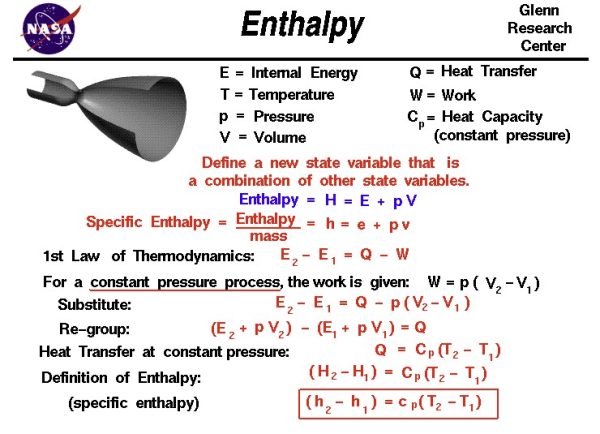
Once cooled a solid mass then acts as a heat sink until it is fully warmed up and cannot take any more. This is why buildings with very thick walls like castles stay cool even in heatwaves due to the huge capacity to soak up heat like a sponge soaking up water. Running an HVLS ceiling fan overnight with open windows can make a massive difference to the heat stored in the building matter. The fan will break up the stratified layers and remove the trapped heat from the air stuck at the roof area and will draw in and replace it with cool air. The HVLS airflow transfers this cool air down to the floor level where it cools the solid floor mass of the building overnight turning it into a massive heat sink or sponge ready for the start of the next hot day. This is easily and effectively done in an eco-friendly way using a fraction of the energy running costs of an air conditioning system.

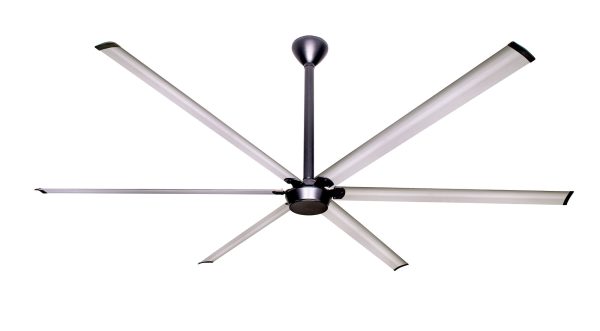


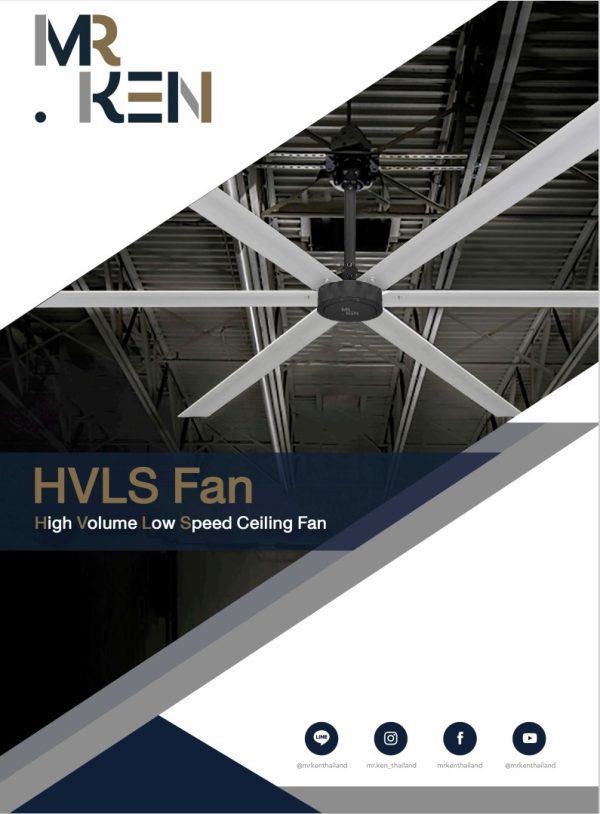


















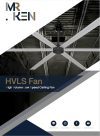



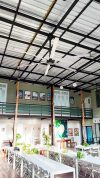
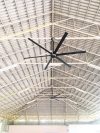

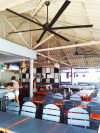
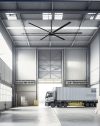

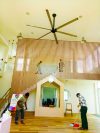
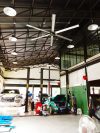


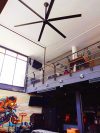
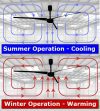

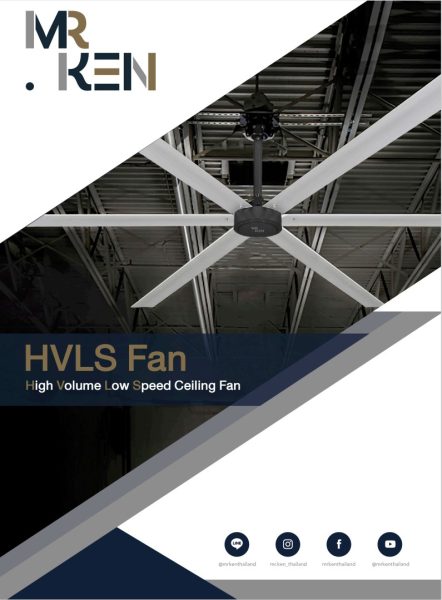

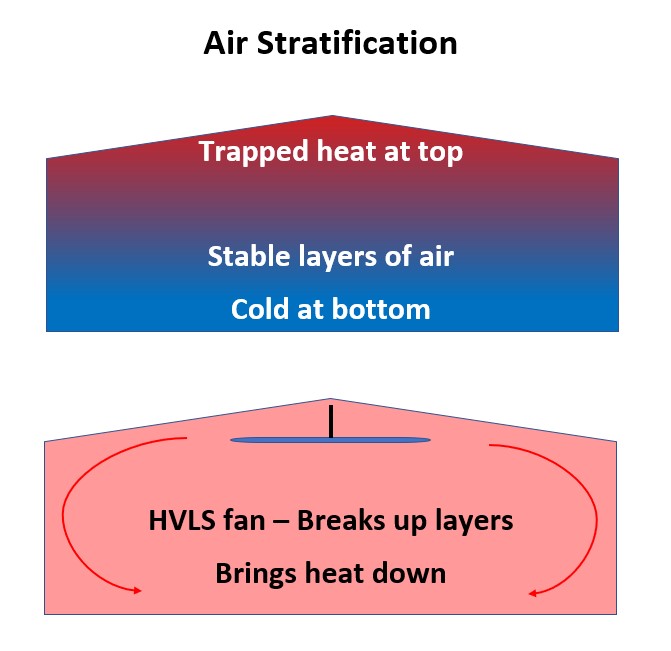
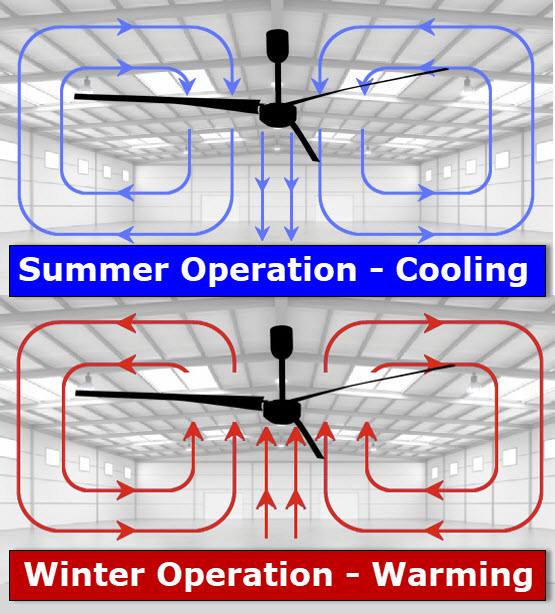
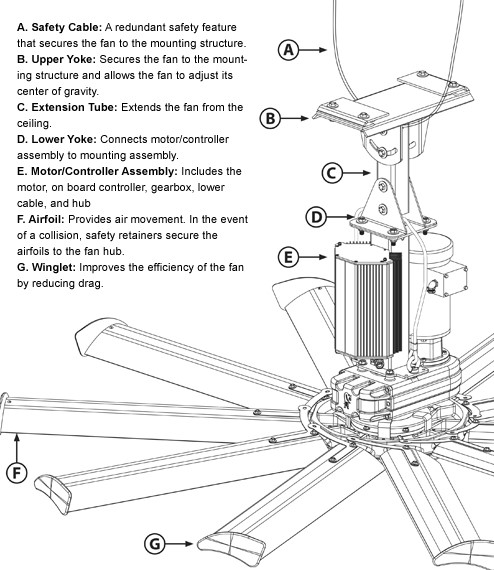
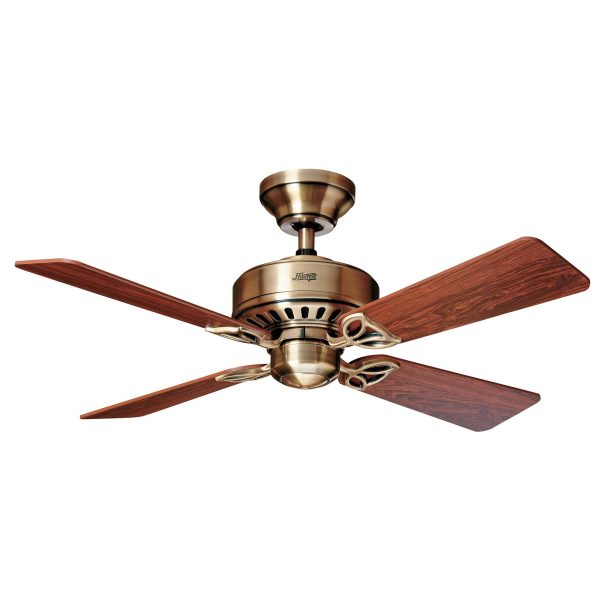
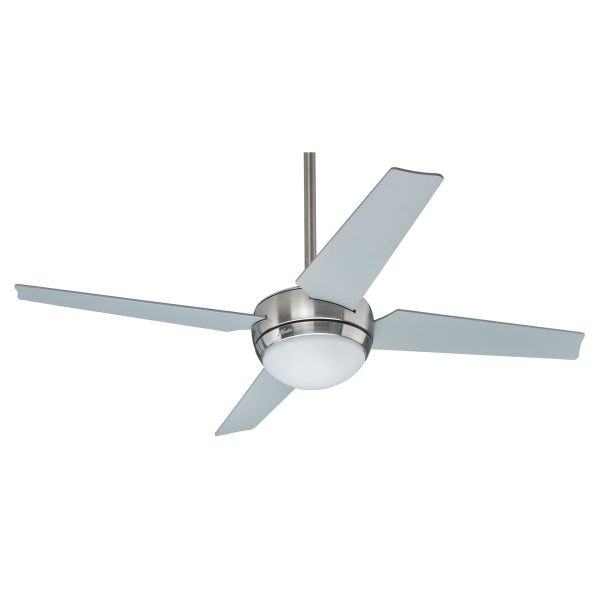
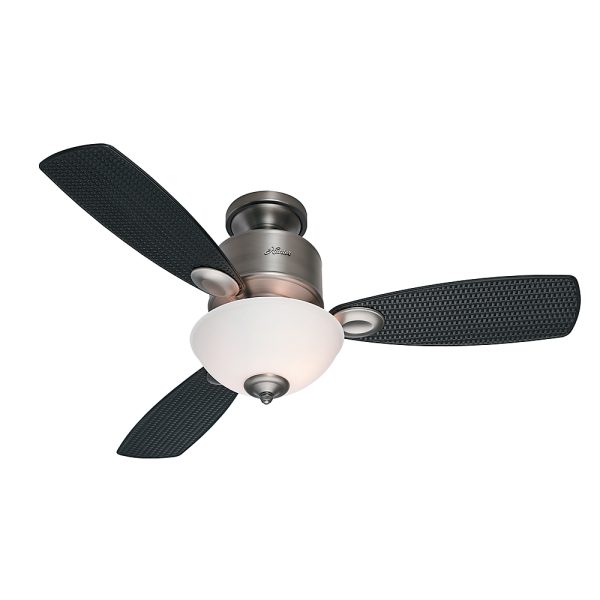
Works well in our warehouse – Peter Robinson (verified owner) –
I was surprised as just how well this fan works as it is quite high up. Easy to install and much cheaper than alternatives that I was considering, I think I made a good choice.
A Good Investment – Roland Ramsbottom (verified owner) –
This fan works so well – It keeps our garage nice and cool in the summer and saves a ton on heating in the winter.
Effective and money saving – Chris Daikin (verified owner) –
This improves our factory air quality so much – the staff also seem happier but the real gain is the saving on my heating bills.